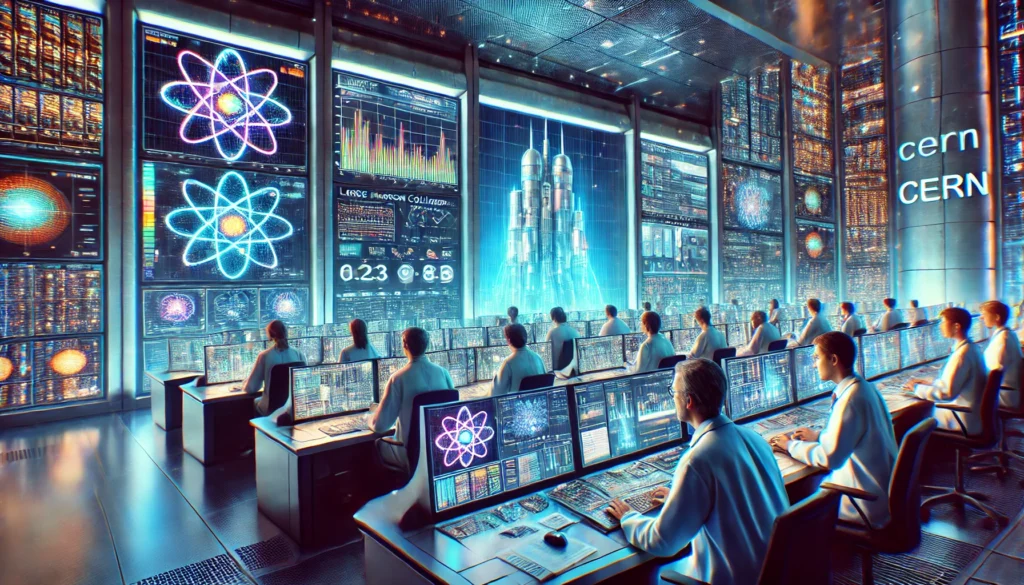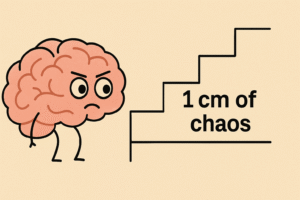Fun Fact: If matter and antimatter were created equally during the Big Bang, they should have completely annihilated each other, meaning none of us should exist!
Imagine waking up one morning to find out you technically shouldn’t exist. Sounds wild, right? Well, according to our best theories about the universe, that’s exactly the mystery scientists have been wrestling with for decades. In this blog, we’re diving into the cosmic puzzle explored in the recent article, “Why is there more matter than antimatter? CERN result offers tantalizing new clue”, and how this discovery could be a major piece in the jigsaw of existence.
Introduction: A Cosmic Whodunnit
Right after the Big Bang, about 13.8 billion years ago, the universe was a hot, dense soup of energy that quickly cooled down and started forming particles. Science tells us that matter and antimatter were created in equal amounts. But here’s the kicker: when matter meets antimatter, they destroy each other in a burst of energy. So… how is there still so much matter around — stars, planets, people, and yes, even your morning chai?
This imbalance has confused physicists for decades, and now researchers at CERN (European Organization for Nuclear Research) — a world-renowned physics laboratory near Geneva, Switzerland — might finally have a clue.
Matter vs. Antimatter: The Basics
Before we get to the juicy part, let’s break down what we’re dealing with.
- Matter: Everything we see around us — people, trees, water, air — is made of matter.
- Antimatter: The “evil twin” of matter. It has the same mass but the opposite electrical charge.
- Annihilation: When matter and antimatter meet, they cancel each other out and release energy.
So if equal amounts of matter and antimatter were created, they should’ve annihilated each other completely. But clearly, they didn’t. The universe — and we — are still here.

What Did CERN Discover?
In a major breakthrough, scientists from the LHCb experiment (Large Hadron Collider beauty experiment) at CERN have observed, for the first time ever, a subtle but important difference in how a baryon (a type of particle) and its antimatter twin decay.
Specifically, they studied the beauty-lambda baryon, a particle made of three quarks, and its antimatter version. These baryons are part of the same family as protons and neutrons — the building blocks of atoms.
Using data collected between 2009 and 2018, scientists found that the decay process for the matter version and the antimatter version was ever so slightly different.
The odds of this being just a fluke? Less than 1 in 3 million.
Why Is This Important?
This might sound tiny, but it’s a huge deal in particle physics. This kind of difference is known as CP violation (Charge-Parity violation). Basically, it’s a sign that nature may slightly favor matter over antimatter, and that’s exactly what might explain why the universe is full of matter.
CP violation was previously observed in mesons (particles made of two quarks), but never before in baryons, which make up most of the universe’s visible matter.
This discovery is like finding a long-lost piece of a treasure map — it doesn’t show you the whole treasure yet, but it definitely proves you’re looking in the right place.
Let’s Break Down CP Violation Simply
Still scratching your head? Let’s use a simple analogy.
Imagine two dancers — one represents matter and the other, antimatter. They’re doing a synchronized routine. Ideally, if they’re perfect twins, every move should match. But suddenly, you notice one of them throws in an extra twirl. That little twirl? That’s CP violation.
It means matter and antimatter aren’t perfect mirror images after all. That asymmetry could explain why matter survived the cosmic dance-off.
A Bit About CERN and LHCb
CERN (European Organization for Nuclear Research): Headquartered in Switzerland, CERN is home to the Large Hadron Collider (LHC) — the biggest and most powerful particle accelerator on the planet.
LHCb (Large Hadron Collider beauty): One of the LHC’s key experiments, designed to study the tiny differences between matter and antimatter by analyzing particles called beauty quarks (also known as bottom quarks).
What Scientists Are Saying
- “I am personally very excited about this measurement,” says Yuval Grossman, a theoretical physicist at Cornell University.
- “A major milestone,” calls it Tim Gershon, from the University of Warwick, UK.
- Tara Shears, from the University of Liverpool, says, “Understanding what is going on in baryons might help us work out what is driving the difference.”
When top physicists are this excited, you know something big is brewing.
What Happens Next?
This discovery opens the door for deeper investigations:
- More experiments to confirm the result.
- Testing different types of baryons.
- Possibly discovering new laws of physics beyond the Standard Model (our current best theory of particle physics).
It’s also a nudge for other physicists working on alternate theories that try to explain the matter–antimatter mystery — now they have something new to work with.
Why Should You Care?
You might be thinking — “Cool story, but how does this affect my life?”
Here’s the thing: understanding why matter dominates the universe is about understanding why you exist. It’s a deep, existential mystery that has baffled minds for generations. Every new discovery like this brings us closer to knowing the true story of the universe — a story that you and I are part of.
Conclusion: A Tiny Twist, A Giant Leap
The recent findings from CERN’s LHCb experiment may not have all the answers yet, but they’ve shown us a tiny, fascinating twist in the tale of our universe, by observing a difference in how a baryon and its antimatter version decay, we now have a stronger hint about why there’s something instead of nothing.
So, the next time you gaze at the night sky, just remember: you’re here because somewhere, somehow, matter won.
Author’s Note
Hi, I’m a science enthusiast who loves turning complex cosmic mysteries into relatable conversations. I hope this post helped you see particle physics in a more approachable light. Let me know what you’d like to explore next!
G.C., Ecosociosphere contributor.
References and Further Reading
- Nature Article: Why is there more matter than antimatter?
- What is the Universe Made Of?. https://idea.devgurux.com/what-is-the-universe-made-of/
- Doctor Who science explained: what is antimatter? | Radio Times. https://www.radiotimes.com/tv/sci-fi/what-is-antimatter-doctor-who-science-explained/
- Large Hadron Collider sees tantalising hints of a new particle that could revolutionise physics | IBTimes UK. https://www.ibtimes.co.uk/large-hadron-collider-sees-tantalising-hints-new-particle-that-could-revolutionise-physics-1534005




